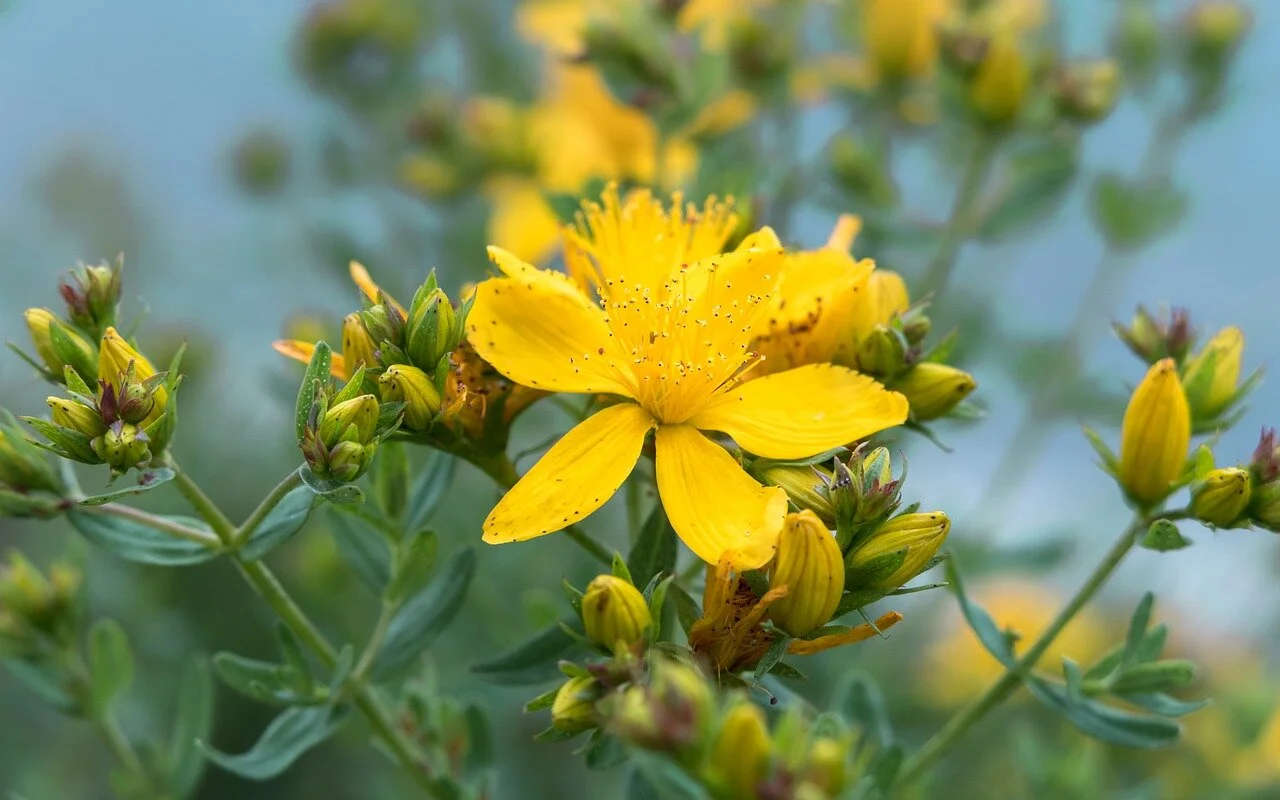St John’s Wort
It's St. John’s Wort time! Famously typecast as a herbal antidepressant, this antiviral and pain-relieving nerve tonic has just come into flower (or not quite in Edinburgh) and will be around for the next couple of months, depending on where you live. It’s an easy one to identify with it’s small stature, delicate leaves, and bright yellow, exuberant, slightly giddy-looking flowers. The medicinal species is Hypericum perforatum, the latter referring to the curious holes that perforate the leaves. There are many species in the Hypericum genus, but H. perforatum is THE St. John’s Wort.
And while, yes, it does have value - a lot of value - in the treatment of depression and anxiety (I find particularly where there is a sense of being overwhelmed), to confine it to those conditions is a waste of fine medicine. The herb is strongly antiviral, particularly against the herpes viruses - simplex 1 and 2 (oral and genital), and zoster (chickenpox/shingles), and it is invaluable in treating the pain of shingles. As a first rate nerve tonic, St. John’s wort relieves inflammation in the nervous system, improving its function from brain to spinal cord to gut to sense organs including skin; encourages the healing of damaged nervous tissue; and helps relieve the pain and peculiar sensations due to damaged nerves. If the ailment is a local one, topical preparations can be applied. If it is a more diffuse and general effect one is after, the herb can be taken internally as tea or tincture.
Traditionally, the flowers are infused in oil, olive being a good choice, in the bright summer sunlight (small chance of that in Scotland!). You can tell good quality St. John’s wort infused oil because the sunlight turns it a stunning dark red. This oil can then be used in balms and creams for a wide variety of conditions including painful muscles and joints, painful osteoarthritis, scars where nerve tissue has been affected, and burns - but only after the heat is out of them and not if the skin is broken. And if you rub the bright yellow buds and flowers between your fingers they will turn a full grapey purple. And that’s magic! It is always a delightful sight when the Wort comes into bloom again. Grab a good flower guide and get appreciating!

